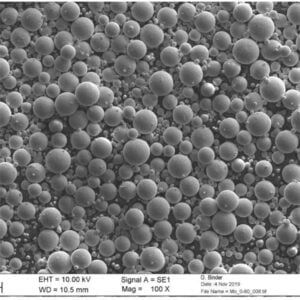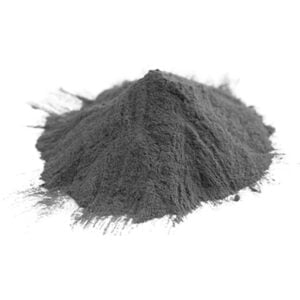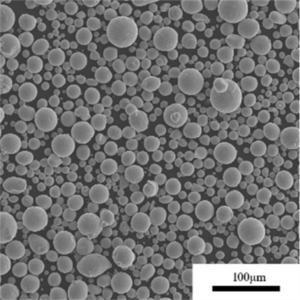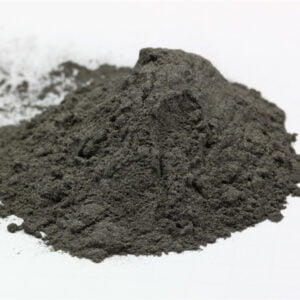Prášky ze slitiny titanu a molybdenu
Obsah
práškové slitiny titanu a molybdenu enhance high-temperature strength and creep resistance for lightweight aerospace designs. This guide reviews TiMo alloy powder compositions, key characteristics, production methods, suitable applications, specifications, purchasing considerations, supplier comparisons, and pros/cons.
práškové slitiny titanu a molybdenu Typické složení
| Stupeň slitiny | Titan (%) | Molybden (%) |
|---|---|---|
| Ti-6Al-7Nb (IMI 550) | Zůstatek | 7% |
| Ti-15Mo-3Nb-3Al-0.2Si | Zůstatek | 15% |
| Ti-11.5Mo-6Zr-4.5Sn (Ti-11) | Zůstatek | 11.5% |
| Ti-15Mo-5Zr-3Al | Zůstatek | 15% |
Molybdenum levels between 7% and 15% effective for high-temperature strengthening. Other elements like niobium, zirconium, and tin further boost creep properties.
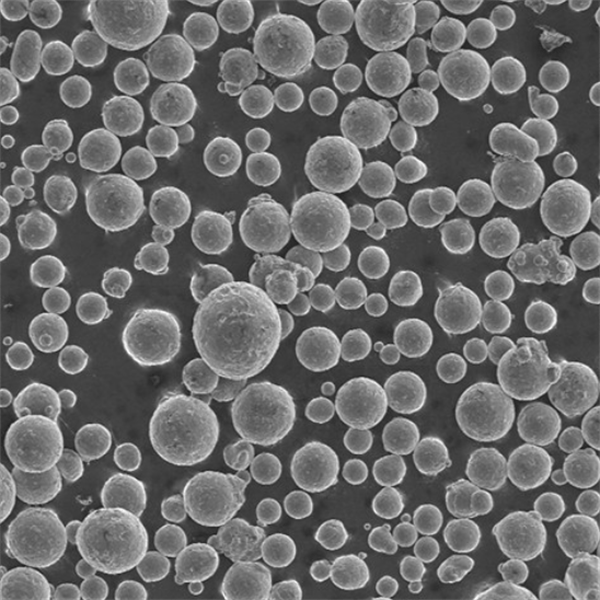
Charakteristika a vlastnosti
| Atribut | Podrobnosti |
|---|---|
| Tvar částic | Spherical from inert gas atomization |
| Kyslík ppm | Pod 500 ppm |
| Typical density | 4,5 g/cc |
| Tepelná vodivost | 4-6 W/mK |
| Pevnost při vysokých teplotách | 100 MPa at 500°C |
| Odolnost proti korozi | Forms protective TiO2 film |
Particulate nature, low oxygen content and tailored compositions suit alloy powder for additive manufacturing or sintering high performance components.
Výrobní metody
| Metoda | Popis procesu |
|---|---|
| Rozprašování plynu | Inert gas disintegrates molten alloy stream into powder |
| Plazmová atomizace | Very clean but lower powder output vs gas atomization |
| PREP | Spheroidization of existing powders by remelting |
| Hydrid-dehydrid | Brittle TiH2 intermediate for comminution |
Plasma and gas atomization offer the best quality while being more expensive vs secondary routes like PREP and HDH.
Applications of TiMo Alloy Powder
| Průmysl | Příklady součástí |
|---|---|
| Aerospace | Turbine blades, casings, landing gears |
| Výroba energie | Heat exchangers, steam piping |
| Chemické zpracování | Bioreactors, reaction vessels |
| Námořní | Propeller shafts, sonar domes |
| Oil and gas drilling | Geothermal well tools and shafts |
Combination of high strength, low weight and corrosion resistance suits TiMo alloys with demanding environments like aircraft engines or offshore drilling.
Specifikace
| Standard | Třídy, na které se vztahuje |
|---|---|
| ASTM B862 | Ti-6Al-2Sn-4Zr-6Mo, Ti-8Al-1Mo-1V, Ti-6Al-2Nb-1Ta-0.8Mo |
| ASTM B348 | Titanium and titanium alloy bars and billets |
| AIMS 04-18 | Standard for AM titanium parts |
AMPM (American Powder Metallurgy) Institute, IPS (International Powder Metallurgy Standards Organization) also cover various Ti grades.
Globální dodavatelé a cenové rozpětí
| Společnost | Doba realizace | Stanovení cen |
|---|---|---|
| Technika TLS | 16 týdnů | $300 – $900/kg |
| Sandvik | 12 týdnů | $350 – $1000/kg |
| Vybavení společnosti Atlantic | 14 weeks | $320 – $850/kg |
Pricing for 100+ kg batch. Premium for low oxygen and spherical powder. Larger quantities above 500 kg offer 20%+ discounts.
Výhody vs. nevýhody
| Výhody | Výzvy |
|---|---|
| Vynikající pevnost při vysokých teplotách | High raw material costs |
| Corrosion resistant in many environments | Longer lead times for custom alloys |
| Custom alloy design flexibility | Limited global supply chain presently |
| Compatible with powder AM methods | Post-processing often needed after AM |
| Vynikající odolnost proti tečení | Stringent requirements on oxygen/nitrogen |
TiMo powders enable new component designs and lightweight construction but using titanium alloys poses unique powder manufacturing and handling challenges.
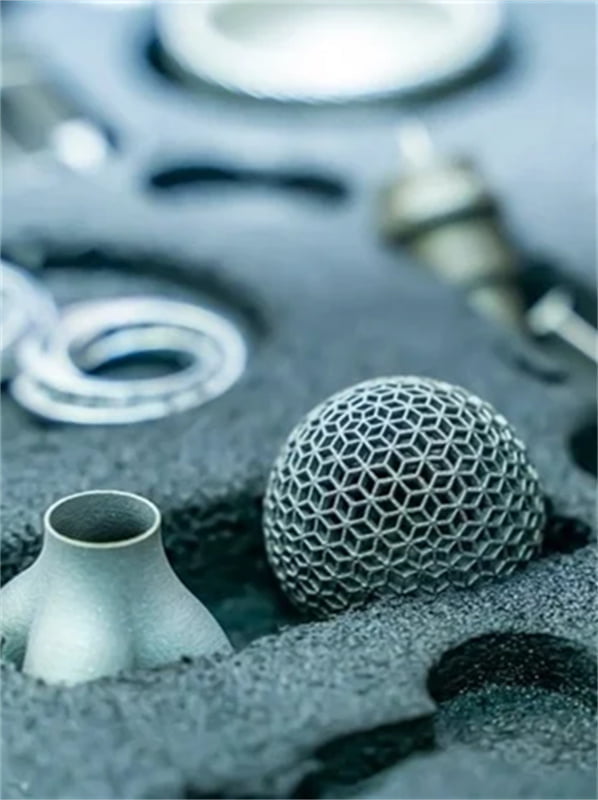
FAQ
What particle size range is optimal for binder jet 3D printing?
Around 30 to 50 microns facilitates higher powder bed density and efficient liquid saturation needed to bind layers properly. Too fine powders hurt performance.
What causes contamination during Ti alloy gas atomization?
Oxygen pickup from any air leaks degrades powder purity hence the need for stringent process controls. Furnace parting agents and melt crucibles are other contamination sources requiring high purity consumables.
Why is high Mo content difficult to achieve in Ti based alloys?
Excessive evaporation losses of molybdenum occur above 25% levels during vacuum induction melting and subsequent remelting steps. Mitigation measures include covering melt pools or using cold crucible techniques.
Jak se má titanový prášek skladovat?
Inside sealed containers under inert cover gas or vacuum. Handled and stored to exclude moisture absorption which causes decrepitation and high osyggen or nitrogen impurity.
What are common defects when AM printing titanium alloys?
Porosity from trapped gas atoms, lack of fusion defects, residual stress cracking, unfused powder trapped inside enclosed volumes. Require integrated parameters optimisation accounting for scan strategy, energy input etc.
Závěr
Shrnutí, práškové slitiny titanu a molybdenu provide customized high temperature properties and corrosion resistance vital for producing next generation components across aerospace, energy and other demanding industries via powder metallurgy or additive manufacturing.
Sdílet na
MET3DP Technology Co., LTD je předním poskytovatelem řešení aditivní výroby se sídlem v Qingdao v Číně. Naše společnost se specializuje na zařízení pro 3D tisk a vysoce výkonné kovové prášky pro průmyslové aplikace.
Dotaz k získání nejlepší ceny a přizpůsobeného řešení pro vaše podnikání!
Související články

Vysoce výkonné segmenty lopatek trysek: Revoluce v účinnosti turbín díky 3D tisku z kovu
Přečtěte si více "O Met3DP
Nedávná aktualizace
Náš produkt
KONTAKTUJTE NÁS
Nějaké otázky? Pošlete nám zprávu hned teď! Po obdržení vaší zprávy obsloužíme vaši žádost s celým týmem.

Kovové prášky pro 3D tisk a aditivní výrobu
SPOLEČNOST
PRODUKT
kontaktní informace
- Město Qingdao, Shandong, Čína
- [email protected]
- [email protected]
- +86 19116340731






